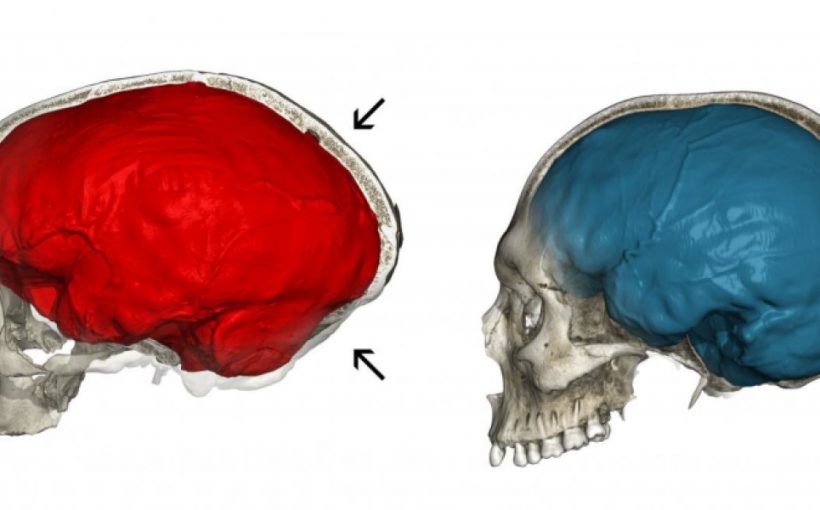
A distinctive feature of modern humans is our round (globular) skulls and brains. On December 13, in the journal Current Biology, researchers report that present-day humans who carry particular Neanderthal DNA fragments have heads that are slightly less rounded, revealing genetic clues to the evolution of modern brain shape and function.
“We captured subtle variations in endocranial shape that likely reflect changes in the volume and connectivity of certain brain areas,” says Philipp Gunz, a paleoanthropologist at the Max Planck Institute for Evolutionary Anthropology, who co-led the study with Amanda Tilot of the Max Planck Institute for Psycholinguistics.
“Our aim was to identify potential candidate genes and biological pathways that are related to brain globularity,” says Amanda Tilot.
To tightly focus their search, they took advantage of the fact that living humans with European ancestry carry rare fragments of Neanderthal DNA buried in their genomes, as a result of interbreeding between Neanderthals and the ancestors of modern Europeans. Different people carry different fragments, which are scattered through the genome.
Gunz, Tilot, and colleagues analyzed cranial shape and identified stretches of Neanderthal DNA in a large sample of modern humans, relying on MRI brain scans and genetic information for about 4,500 people. Based on computed tomographic scans, they computed the endocranial shape differences between Neanderthal fossils and modern human skulls. They used this contrast to assess endocranial shape in thousands of MRI brain scans of living people.
They used information from sequenced genomes of ancient Neanderthal DNA to identify Neanderthal DNA fragments in living humans on chromosomes 1 and 18 that correlated with reduced cranial roundness. These fragments contained two genes already linked to brain development: UBR4, involved in the generation of neurons, and PHLPP1, involved in the development of myelin insulation around nerve cell projections.
“We know from other studies that completely disrupting UBR4 or PHLPP1 can have major consequences for brain development,” says senior author Simon Fisher, a geneticist at the Max Planck Institute for Psycholinguistics. “Here we found that, in carriers of the relevant Neanderthal fragment, UBR4 is slightly down-regulated in the putamen. For carriers of the Neanderthal PHLPP1 fragment, gene expression is slightly higher in the cerebellum, which would be predicted to have a dampening effect on cerebellar myelination.”
The putamen — part of a network of brain structures called the basal ganglia — and the cerebellum are thought to be important in movement.
“Both brain regions receive direct input from the motor cortex and are involved in the preparation, learning, and sensorimotor coordination of movements,” says Gunz. “The basal ganglia also contribute to diverse cognitive functions, in memory, attention, planning, skill learning, and potentially speech and language evolution.”
The researchers stress that the effects of carrying these rare Neanderthal fragments are subtle and only detectable in a very large sample size.
“The Neanderthal variants lead to small changes in gene activity and only push people slightly towards a less globular brain shape,” says Fisher. “This is just our first glimpse of the molecular underpinnings of this phenotype, which is likely to involve many other genes.”
The researchers are preparing to scale up their approach and apply it to tens of thousands of people. That will enable them to carry out a fully genome-wide screen to reveal additional genes associated with cranial roundness and other biological characteristics.
“The interdisciplinary approach that we developed for this study could be applied more broadly to unresolved questions about human brain evolution,” says Fisher.


